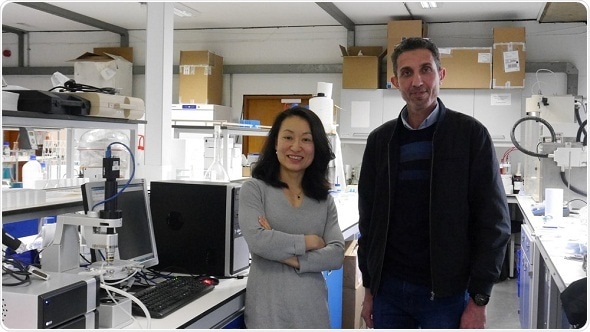A new, simplified hot stage microscopy-based method, thermal analysis by structure characterization (TASC), has successfully been used to screen the miscibility of drug-polymer combinations.

Using a Linkam MDSG600 heating-cooling automated XY stage attached to a Linkam Imaging Station equipped with reflective LED light source and a 10x magnification objective, researchers at the University of East Anglia (UEA), used TASC as a thermoptometeric tool in conjunction with data analysis software to detect the melting point depression and post-melting dissolution of felodipine particles screened over thin spin-coated films of ten polymers commonly used in the pharmaceutical field.
Polymers are widely used to enhance in vivo dissolution and absorption of an active pharmaceutical ingredients (APIs) – and drug-polymer miscibility is a critical factor for success in early formulation. A range of experimental testing, most commonly differential scanning calorimetry (DSC), and theoretical calculations, have traditionally been used to assess drug-polymer miscibility, but the methodology is complex, time consuming and requires (relatively) large amounts of material. The new method published recently, using TASC to detect the key parameter of melting point depression of the drug by the polymer, was significantly faster (20-40 times) than the conventional DSC method, with no loss of sensitivity. Importantly, the quantity of the material required for the screening is less than 1/1000th of the material used in conventional DSC tests.
Duncan Stacey, Sales and Marketing Director, Linkam Scientific Instruments comments:
This new application of TASC looks to be a valuable alternative to established methodology. TASC is a conventional light microscopy-based method which detects changes in images automatically. It does this by comparing a sequence of images pixel by pixel. The resulting image series of the samples captured during thermal treatment (either heating, cooling or an isothermal hold) is taken and the TASC algorithm quantifies the changes of surface features in successive micrographs of samples. These changes are then plotted against temperature or time.”
One of the researchers, Sheng Qi, School of Pharmacy, University of East Anglia explained:
To successfully formulate a so-called solid dispersion product, the drug needs to be highly miscible with the polymer. However, the pre-formulation stage of screening suitable polymers is often a lengthy process requiring the use of a range semi-empirical, theoretical and experimental methods. The results from this study demonstrate TASC as a promising screening tool for rapidly selecting the polymeric excipients for pharmaceutical formulations development.”